5 Effective Strength Workouts To Build Muscle as You Age
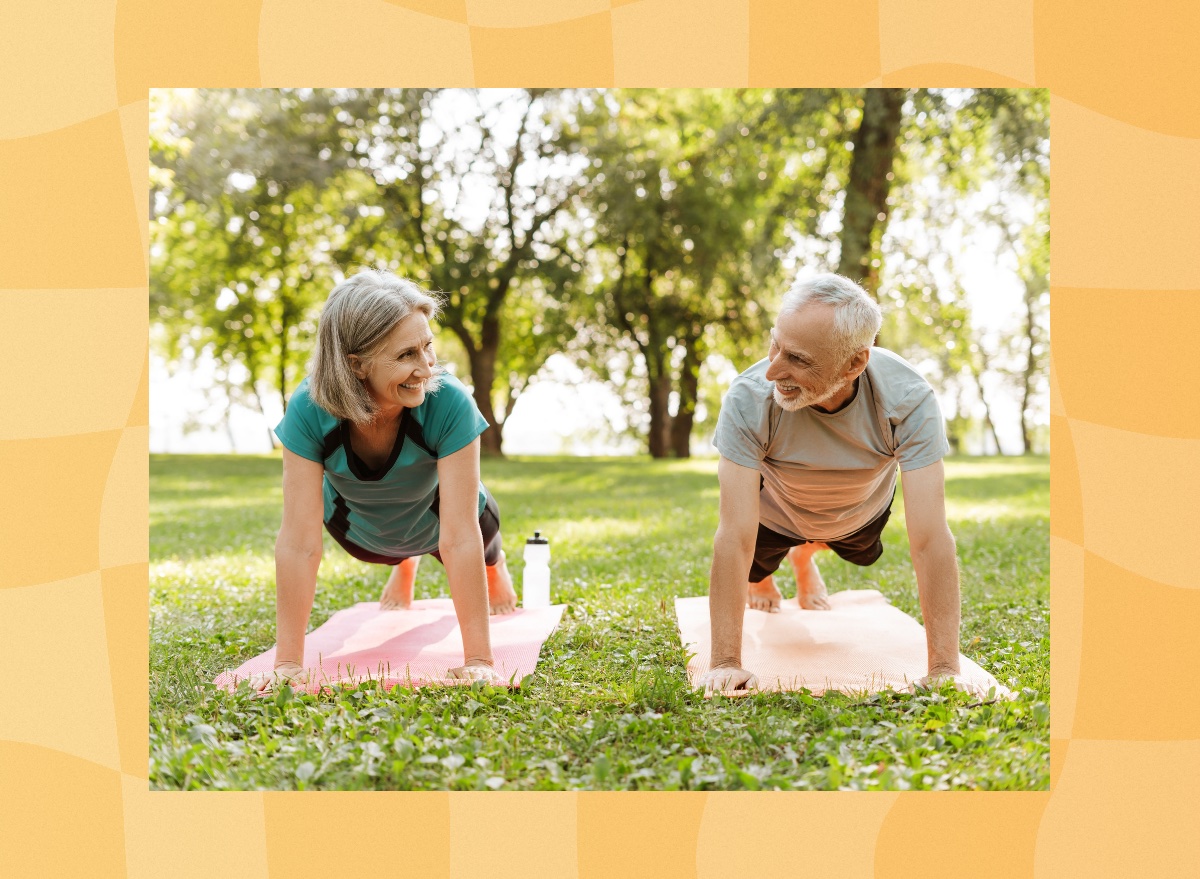
Experiencing changes in your body is a normal course of life. After turning 30, your body loses muscle and strength, a process known as sarcopenia. Not to be the bearer of bad news, but the damage doesn't stop at 30—sarcopenia can progress as much as 3% to 8% every 10 years! Why should you be concerned? Well, losing muscle can make simple daily activities like standing up, walking, and running errands a major challenge. The best way to avoid sarcopenia is by including strength training in your exercise routine. That's why we've spoken to experts and have five essential strength workouts to build muscle as you age.
"[The workouts below] are all focused on helping you preserve the type of muscle you're most likely to lose as you age and the type of muscle that will most impact your actual quality of life," explains Domenic Angelino, CPT with International Personal Trainer Academy (IPTA). "Different exercises target different muscle groups to help maintain whole-body function over the years. The exercises selected also involve diverse movement patterns so that your workouts will support the retention of and increase of bone density in various important regions of your body."
If you don't currently have the mobility to perform the complete range of motion of any of these exercises, Angelino assures you that's perfectly okay. Simply perform the portion of the range of motion you can safely complete. "As your mobility increases over time, it'll be easier to go through the full range of motion," he encourages.
The strength workouts below will help you build and maintain muscle so you can lead an active, healthy lifestyle.
Dumbbell Goblet Squat
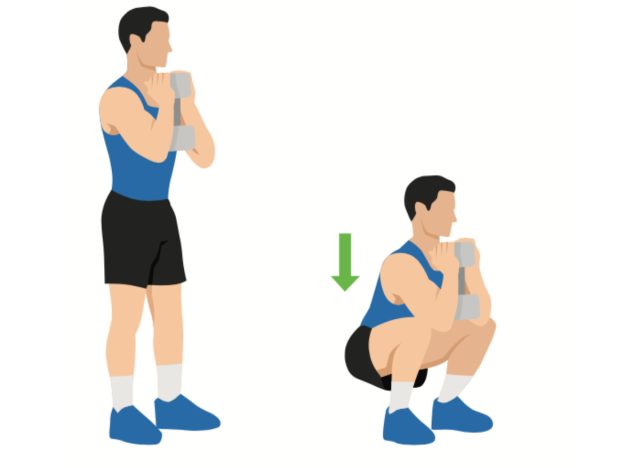
"Including some type of squatting exercise in your strength training workout is effective because it directly supports muscles that help you complete important daily functions, like sitting down and standing up," Angelino explains. "This makes it a super practical way to focus your time and energy."
How To Do It:
- Stand tall with your feet shoulder-distance apart while holding a dumbbell at chest height.
- Lower into a squat until your thighs are parallel to the floor.
- Press through both feet to rise back up.
- Complete 3 sets of 6 to 8 reps.
Barbell Sumo Deadlift
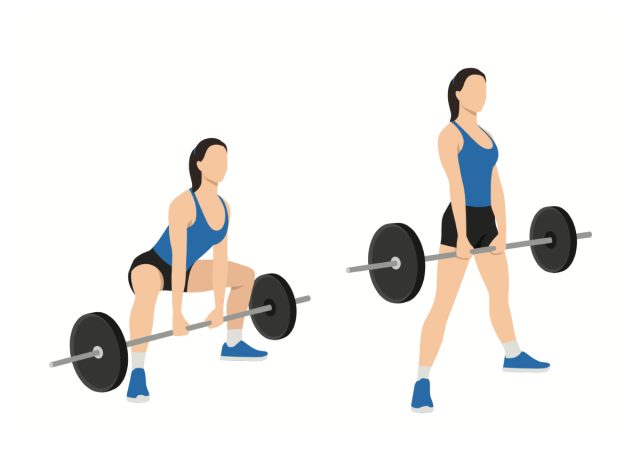
A deadlift might seem intimidating at first, but it can significantly impact your ability to maintain muscle and bone density as you grow older.
"It's very time-effective as an exercise," Angelino tells us. "It also helps you effectively target muscles in your lower back, strengthening them in a way that can limit back pain and injuries that are common in older age. That being said, the deadlift is an exercise that is difficult to get right when it comes to form. That is why I'd recommend focusing on the Sumo Deadlift version of the exercise instead of the conventional one. It's a bit easier to get the form right, and you have a bit more leeway [regarding] how much you can deviate from ideal form without causing injury."
How To Do It:
- Stand tall behind a barbell with your feet placed wider than shoulder-distance apart and pointed slightly out, lining up with your knees.
- Keep your back straight, squat down, and grab the barbell with your arms fully extended.
- Press through your feet to stand up tall.
- Once standing, lower the barbell toward the floor while keeping your back flat.
- Let the barbell rest on the floor before your next rep.
- Complete 3 sets of 6 to 8 reps.
Assisted/Unassisted Pull-Up
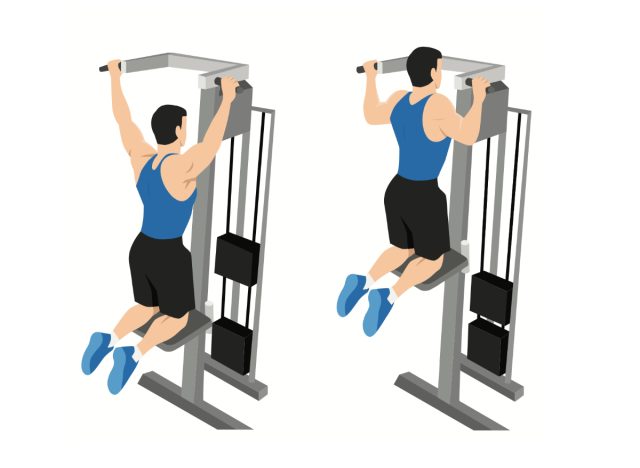
The awesome thing about this exercise is most people have the strength to complete an assisted pull-up, given you have access to an assisted pull-up machine.
"The way that the machine works is that the weight you use acts as a counterbalance to your own body weight," Angelino explains. "So if you weigh 200 pounds and select a 100-pound weight on the weight stack, you'll only be lifting 100 pounds as you do the pull-up instead of your full 200-pound body weight … This lets you work up to eventually being able to perform a normal pull-up without assistance."
How To Do It:
- Place your feet or knees on the assisted pull-up device. If you see a pad, you'll likely need to position your knees on it; if you see a bar, you'll likely need to position your feet on it.
- Place your hands slightly outside shoulder-width, palms facing away from your body.
- Lower your body until your arms are fully extended.
- Bend your arms to pull your body up.
- Complete 3 sets of 6 to 8 reps.
Standing Dumbbell Overhead Press
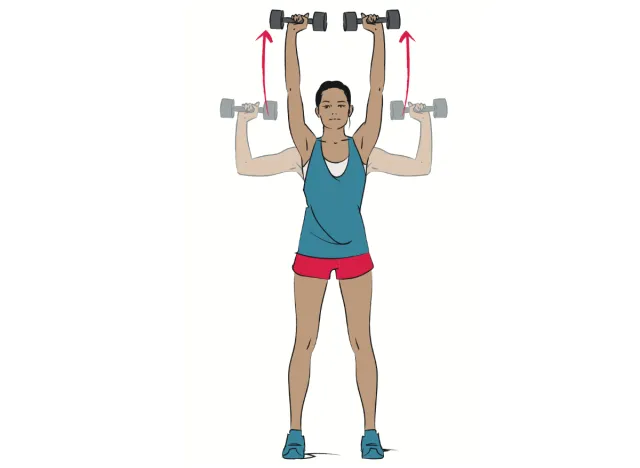
"This exercise directly addresses a common challenge that people who experience significant related muscle loss experience later on in life: difficulty raising their hands over their heads," says Angelino. "Losing strength in this way can really interfere with your quality of life, making it hard to use high shelves. This exercise protects against that."
How To Do It:
- Stand tall, holding a dumbbell in each hand at shoulder height.
- Press the weights overhead until your arms are completely extended.
- Lower the dumbbells to the start position.
- Complete 3 sets of 6 to 8 reps.
Plank
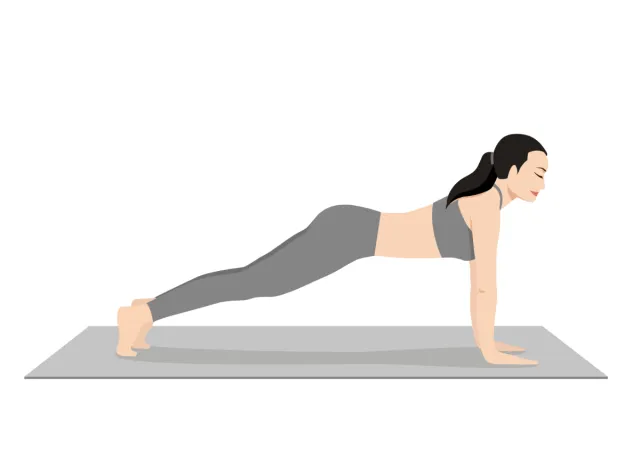
Low core strength is a common cause of back pain and can heighten your risk of falls.
"The plank is great for increasing the strength of your transverse abdominis, which plays a big role in stabilizing your torso and can become atrophied following years of under-use," explains Angelino. "The range for this exercise is pretty wide because you can only hold the exercise for as long as your current level of strength and body weight allows."
How To Do It:
- Place your hands shoulder-width apart on the floor and your legs extended behind you to assume a high plank.
- Hold this position.
- Complete 4 sets of 30 to 60 seconds.









